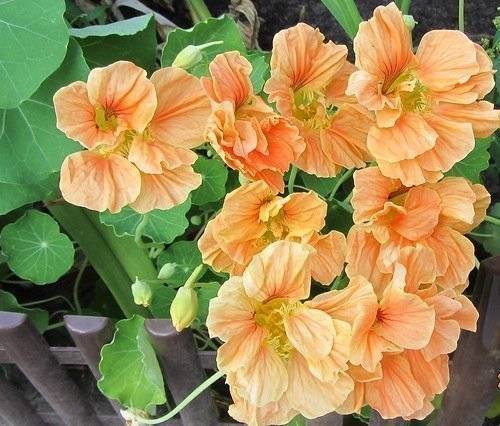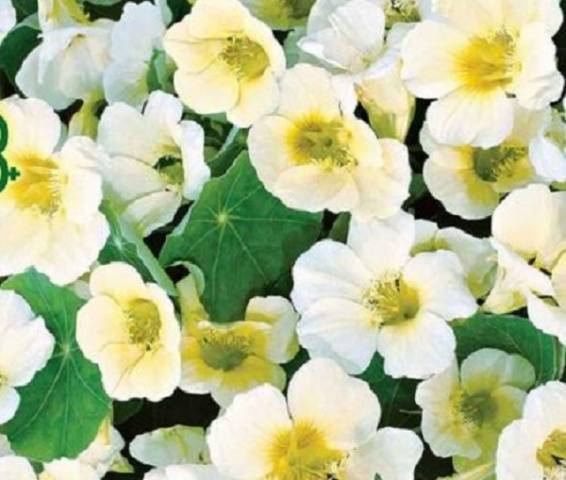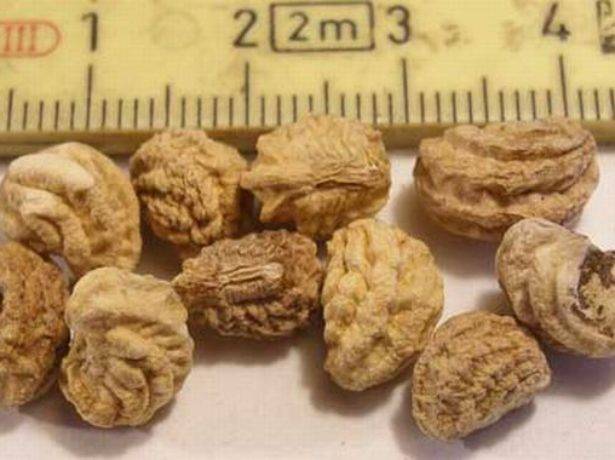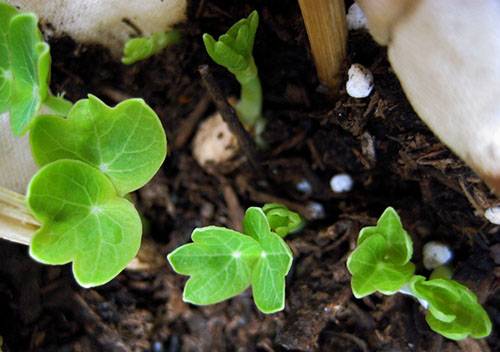Content
There are so many beautiful flowers for decorating garden plots, but not all of them can be grown by beginners. Many beauties have a very capricious character (lobelia, petunia), and are even completely poisonous and require very careful handling at all stages of cultivation (delphinium, foxglove).
And there are plants that are distinguished not only by their unpretentiousness (they even bloom better in poor soils), but also by their versatility of use (they are good in flower beds, beds, balcony boxes and hanging flowerpots). They also have valuable medicinal and nutritional properties. Some experienced flower growers have probably already guessed that we are talking about nasturtium or capuchin, as it is often called in most European countries. The scientific Latin name for nasturtium is tropaeolum, which means “small trophy.” This is apparently due to the fact that the leaves of most species are shield-shaped, while the flowers resemble a helmet.
The popular names of this popular flower reflect its many properties: Indian cress, redcress, colored lettuce.
Useful properties of nasturtium
Indeed, nasturtium is not only a beautiful flower, the sight of which in itself can delight the eye, and the aroma can delight the soul. All above-ground parts of nasturtium - stems, leaves, flowers and seeds - are edible and have medicinal properties. Some species of nasturtium, native to South America, even produce edible and very tasty tubers.
Leaves, buds and flowers are used in salads, hot dishes and to decorate holiday dishes. They can be added to a variety of sauces, oils and cheeses to add a piquant taste. The fruits can be pickled and then you will get a delicious dish that is in no way inferior to capers. And if you dry and grind nasturtium seeds, the resulting powder can completely replace ground black pepper.
And the range of medicinal properties of this flower also cannot but delight. It has been established that it has anti-inflammatory, expectorant, antiseptic, laxative, diuretic, antibiotic and antiscorbutic properties.
Nasturtium juice can help with baldness, some skin diseases and problems with kidney stones.
Of course, during treatment you should be careful and take a healthy measure, since an overdose can cause irritation of the gastrointestinal tract.
Variety of species
The Nasturtium genus includes about 80 species of perennial plants native to Central and South America. Since flowers are quite heat-loving and do not tolerate negative temperatures, in Russia we can only enjoy them during the summer. Various types of nasturtium have been widely known in culture since the mid-19th century.
Among the large number of species and varieties, it makes sense to distinguish only a few varieties.
Bush
Bush nasturtiums, which mainly include Nasturtium minor plants. They grow in small compact bushes, no more than 35-40 cm in height. The most interesting and exotic varieties in this group are:
- Cherry Rose – this variety can be classified as terry.
The color of the flowers is quite rare - pink-crimson, so the name is completely true. - Black Velvet or Black Lady - a nasturtium variety with a very unusual flower color.
They are brown-burgundy, almost black. The leaves also have a dark green tint. - Vesuvius – the color of the flowers is very delicate.
Against the background of a smooth transition from pink to orange, there are faint reddish spots.
Curly or ampelous
Nasturtium vines, growing up to 3-4 meters in length, can be placed on a vertical trellis or hung down from a basket and even covered with them in a flower bed.
- Terry mixture – this variety is interesting, first of all, for its double lush flowers, which can be of a wide variety of shades.
- Yeti – the leaves have an emerald tint, and the flowers are very light, almost white, decorated with yellow spots.
- Alaska – a unique variety of nasturtium, when the plant attracts the eye even without flowers, thanks to its painted decorative leaves.
- Diamond - a variety with very bright and rich red flowers.
Canarian or foreign nasturtium stands out separately. This species is the only one unable to form seeds in Russian climatic conditions.
But it looks very exotic - the leaves are heavily cut, and the flowers resemble the wings of some birds.Planting and caring for it are no different from other varieties.
Features of seeds
Nasturtium seeds are quite large; one gram can contain from 10 to 30 pieces. Germination is about 70% and lasts 4-5 years.
If you want to collect and sow seeds from your own nasturtium flowers, keep in mind that at first they are connected together in threes and are green in color. As the seeds ripen, they increase in size and turn whitish in color. Fully ripened nasturtium seeds fall off easily, so it is recommended to collect them slightly unripe. In a warm and dry room, the seeds easily ripen to the required state and become wrinkled with shallow grooves, as in the photo below.
Despite the fact that nasturtium itself is very heat-loving and does not tolerate frost, its seeds can easily overwinter in the ground and remain viable. This explains the fact that this flower often reproduces by self-sowing.
If you are going to use the traditional method of sowing seeds in the ground to grow nasturtium, then you must first soak the seeds for a day in water or in a solution with stimulants. In this case, the hard shell will soften and the seeds will germinate more quickly and amicably. It will be even more effective when soaking the seeds to pour hot water and leave in it for a day.
Sowing time
To answer the question of when to plant nasturtium, you need to understand how and where you want to grow it.
Considering the fact that neither seedlings nor grown nasturtium seedlings tolerate frost at all, it is possible to sow its seeds in open ground only at the end of May (for conditions in the middle zone). And in this case, you can enjoy the flowering of nasturtium only from mid-July.
Therefore, if you want nasturtium to bloom in your garden in June and delight you with flowering until autumn, you need to sow its seeds for seedlings no later than April.
It happens that people want to grow nasturtium for flowering on the balcony or in hanging pots and containers. In these cases, seeds for seedlings can be sown even in March and generally at any time of the year. If only you can provide the nasturtium with a bright and frost-free room for flowering.
Sowing seeds in the ground
This method is universal and the most common among gardeners, since in the spring, if there is a lack of time, there is no point in messing with nasturtium seedlings, which germinate quite easily and relatively quickly. In addition, nasturtium has a very delicate root system, which can hardly tolerate picking and may be stunted in growth after transplantation.
And when planting seeds directly into the ground, under favorable weather conditions after germination, the sprouts quickly gain strength, and their root system is not subjected to unnecessary stress. If in your area the weather can be unpredictable even at the end of May, then it is better to cover the plantings with a layer of non-woven material.
Planting nasturtium seeds in a flowerbed does not present any difficulties. The soil is spilled with hot water before planting. Then depressions 1.5-2 cm in size are made in the ground, and 2-3 seeds are placed there. Nasturtium seeds are covered with loose soil and slightly compacted on top.Then, if necessary, the flowerbed is covered with spunbond, lutrasil or other non-woven material. In outdoor conditions, you can expect germination in about two weeks.
The video below shows in detail the process of sowing nasturtium seeds in the ground.
Planting seeds for seedlings
Despite the fact that growing nasturtium by direct sowing in the ground has its advantages, this method also has disadvantages:
- Seeds can take a very long time to germinate, and in the case of cold or very rainy weather, they may not germinate at all.
- Nasturtiums will bloom quite late, in mid-July.
- If the soil in the flowerbed is not very suitable for the flower, for example, with a high content of clay particles, then problems with nasturtium germination are also possible.
Therefore, if you want to be guaranteed to have already blooming nasturtium by the beginning of summer or by any other date of your choice (even by March 8), then it is better to use the seedling method. Moreover, in recent years, many ingenious ways of planting nasturtium seedlings have been invented, which make planting easier and provide a guaranteed result.
Traditional way
Traditionally, nasturtium is planted as seedlings, like any other annuals, in small containers, so that later, after two or four leaves appear, the plants are planted in separate pots. For nasturtium, this method is not the best, although it is still used by some gardeners. As mentioned above, nasturtium does not like to disturb its root system, so the best option would be to sow the soaked seeds directly into separate containers.
These can be ordinary cups, homemade cups without a bottom, peat pots, and peat tablets.The planting depth should not exceed 1-1.5 cm. The soil for planting must be very light, with a high content of sand or slightly acidic perlite.
Seeds usually germinate at a temperature of +20°+22°C within a week or two. After germination, they must be placed in the brightest place.
Artificial additional lighting lamps are not able to completely replace the sun and the seedlings may stretch. Therefore, it is advisable to place nasturtium seedlings at least for a few hours a day on a sunny windowsill.
The video below will clearly demonstrate the entire process of growing nasturtium from seeds before planting in a flowerbed and flowering.
Planting in sawdust
This method saves space for sowing, accelerates the germination of nasturtium seeds and, most importantly, facilitates further transplanting/picking.
Seeds can be initially planted in one container. Its size depends on the number of seeds you are going to sow. You will need sawdust, preferably hardwood. Coniferous sawdust is not suitable due to its high resin content. You can also take compressed sawdust in granules, which are sold for use in cat litter.
Place a layer of sawdust about 3-3.5 cm thick in the prepared container and pour a small amount of boiling water over it to moisten it well. But there is no need to create a swamp.
Place nasturtium seeds (even without pre-soaking) in holes made in sawdust, at a distance of about 4-6 cm. The sawdust should be quite hot, so that only your hand can stand it.After sowing, cover the container with a bag to create a greenhouse effect and place it in a warm place for germination.
After the emergence of seedlings, within a few days the nasturtium sprouts can be carefully transplanted into separate pots with ready-made soil. In this case, the transplantation is absolutely painless, since on the one hand the sawdust is very loose and light and the roots are not disturbed at all, and on the other hand, the plants are still very tiny and can easily tolerate transplantation.
Thus, this method guarantees you fast and almost 100% germination.
This method is described in detail in the video below.
Growing nasturtium without soil
In recent years, the method of planting seeds of various plants in rolls or “snails,” as they are sometimes called, has become especially popular. To do this you will need:
- A strip of dense polyethylene or laminate backing, 10 cm wide, and its length depends on the number of nasturtium seeds.
- The same size strip of thick toilet paper.
Toilet paper is placed on a laid out strip of polyethylene and generously moistened with Epine solution (3 drops per 1 liter). Along the top edge of the toilet paper, at a distance of 1.5 cm from the edge, nasturtium seeds are laid out evenly, 4-5 cm apart.
After the last seed, there should be another 10-15 cm of strip space free from seeds.
Starting with the first seed, carefully roll the strip into a roll, making sure the seeds stay in place. After rolling, you can tighten the roll with a rubber band or glue it with tape.Then place the roll with the bottom side in a small container of water. And put everything together in a plastic bag. The landing process is complete. Now you just need to remove the roll from the bag every day, ventilate the seeds and monitor their germination. When the first sprouts appear, the roll without the bag is placed in a bright place.
As soon as the seedlings have two leaves, you can unroll the roll and carefully transplant the plants into separate containers.
In this video you can watch the process of planting nasturtium seeds in a roll in detail.
Picking and basic requirements of nasturtium for flowering
Picking nasturtium usually causes great difficulties for gardeners, which is why it is recommended to do without it if possible. If it does happen that your seedlings have become very elongated, and you don’t know how to correct the situation, then when replanting, do not be afraid to bury the nasturtium plants in the ground to the very base of the first leaves. If possible, plant nasturtiums in pots with a large amount of space in height, so that after germination you can add soil to the plants.
But traditional pinching of nasturtium shoots does not always lead to a positive result.
For successful cultivation of nasturtium and abundant flowering, several basic rules should be taken into account:
- When using nitrogen for fertilizing, nasturtium will have an abundance of leaves, but there may be problems with flowering. Therefore, the best fertilizers will be phosphorus-potassium fertilizers.
- Young nasturtium seedlings need moderate-to-medium watering, but with the appearance of flowers you need to be careful with watering. Since the abundance of moisture not only inhibits flowering, but the roots of the flower may even rot.
- When grown in a sunny location, nasturtiums will bloom earlier and bloom more profusely. In partial shade, it can also feel good, but all development processes will be slowed down.
Now that all the secrets and features of this flower have been revealed, even a beginner can grow it. Try and choose any of the planting methods described above and enjoy the beauty, aroma and beneficial properties of nasturtium.




























